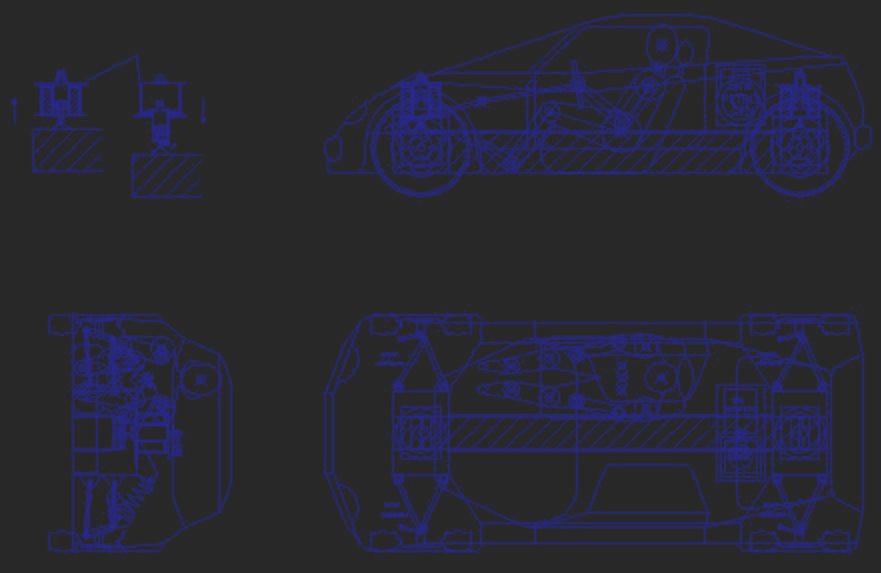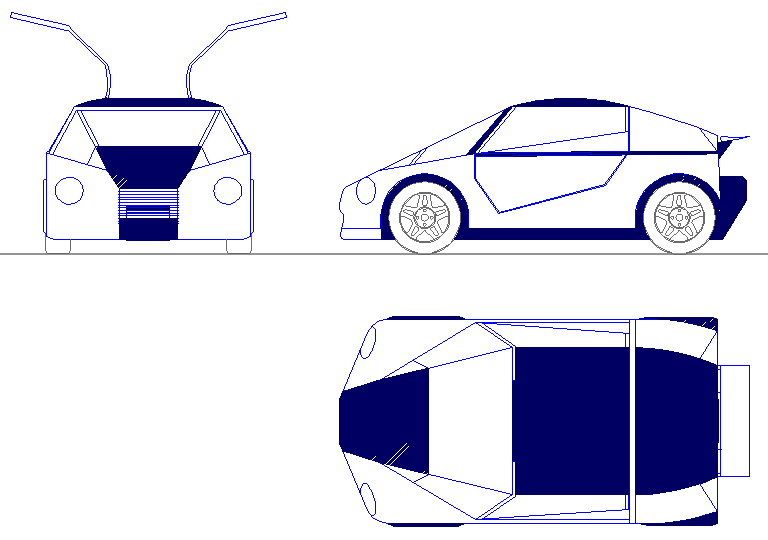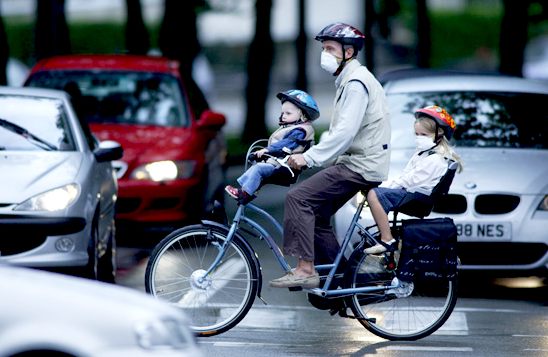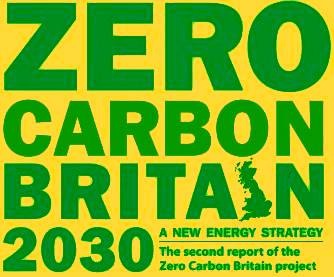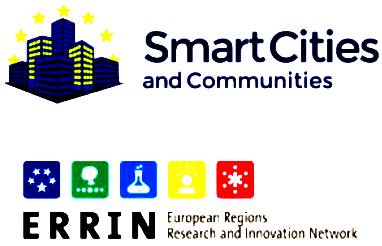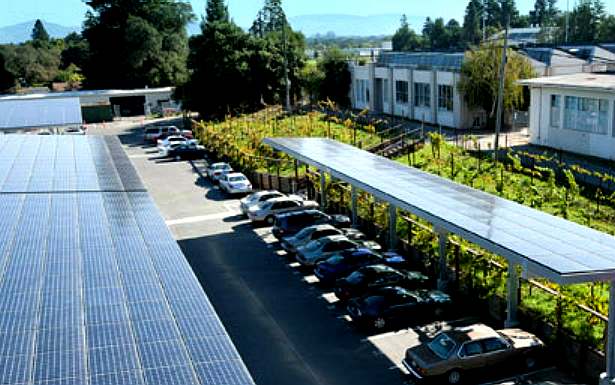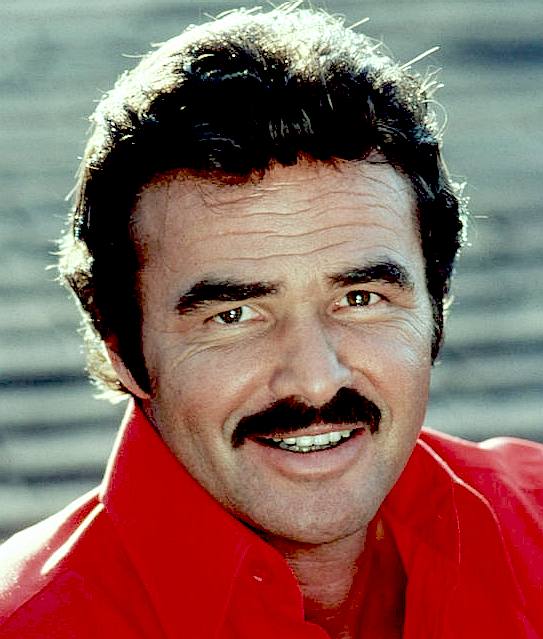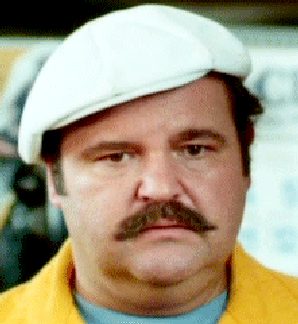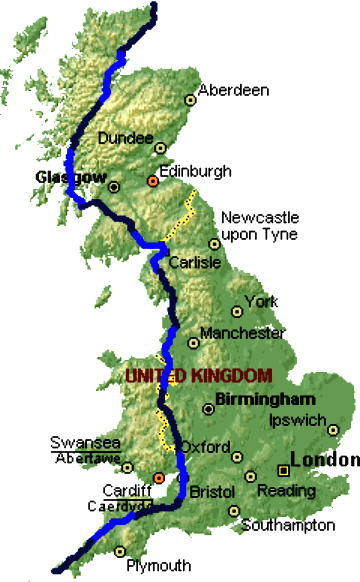|
SMARTER CITIES - EV INFRASTRUCTURE
|
|
|
PLANNING FOR A BETTER PLACE TO LIVE
Energy self-sufficient, or solar powered houses are one giant leap forward for sustainability. Smart cities begin with smart villages and towns. Cities are not planned, they evolve (more is the pity) like ivy, climbing a tree, enveloping and strangling the host. A city cannot provide energy for itself, nor grow food to be self-sustaining. One reason that the ancient Egyptian and Myan cultures died out, they literally ate themselves out of house and home, or, in the case of the Egyptians, burned all the wood for plaster, thus destabilizing the agriculture they were built on.
The village, town and city of the future will, at its grass roots level, include the infrastructure to support clean electric transport. How? In the past horses provided transport and so stables were everywhere. It was self-sustaining or the horses died and there would then be no deliveries. Transport is essential to sustain towns and cities - to bring in the food that they cannot grow for themselves and just about everything else. A city is a bit like a sick patient in this regard. it cannot fend for itself.
A city cannot generate its own energy from nature. It relies on electricity supply from utilities miles away from the source. There is no way that such a condensed layout could capture heat energy such as to be self sufficient. Cities are also choked with carcinogenic fumes from IC engines, so are breeding grounds for diseases such as cancer. Why then do we allow choking cities? Because there was no choice. Governments have known about these issues for years, but had no alternative but to continue to balance the books. It's all down to money. Sadly, the books do not balance, hence our ridiculous National Debt. The US is no better off with fiscal policies that stink, based on financial slavery. Financial slavery is where the administration of a country keeps the cost of living high for the average man to keep all the fat cats in plum jobs in luxury.
The picture above shows solar panels on the bonnet, roof and boot-lid of the Ecostar DC50, a car that is designed around the Bluebird™ cartridge exchange recharging system. This near micro sports car provides 19.2 sq ft or 1.78 m2 for the placing of solar cells - which could provide up to 340 watts of energy an hour by way of solar assistance. The Ecostar has a 20Kw/hr cartridge for a 200 mile range. Charging by solar power alone would take 59 hours of sunshine - or six 10 hour days of daylight. Thus, if you travel less than 200 miles a week, your car could be charged free by nature, assuming reasonable weather. Now that is what we call sustainable motoring. One point eight square meters of solar panels will cost you around £130 DIY. That is 23.6 gallons of petrol, or 945 miles @ 40mpg, an average good yield. 945 miles divided by 200 miles per cartridge charge = just 4.7 weeks of free solar motoring. We think you will agree from this example that solar assistance makes a lot of sense. With a vehicle format like this you can begin to break the bonds of financial slavery. With an affordable flatpack home and a vehicle like this, your working life (the need to work to survive) could be substantially reduced.
Governments will not like that one bit. They want you to keep working so that they can tax you. They won't promote sustainability because all the civil servants rely on un-sustainable policies to keep their plum jobs. Vote for cherry solutions and tell them where they can put their plums.
THINK SMARTER
The life blood of a city are the towns that generate income. The life blood of towns are villages. Taking that one stage further, each house in a village underpins the human occupiers, providing sleep and protection from the elements. A modern cave. Basic stuff, that tends to get forgotten.
The starting point for a SMART city is therefore the village housing unit. If that unit is energy self-sufficient it reduces the strain on supply to the patient. If that unit is also transport self-sufficient, so much the better.
VILLAGE TRANSPORT
For this reason we are advocates of electric vehicles that cut our reliance on fossil fuels. We need a system that can in the worst case scenario, provide transport for life - starting with villages, working up to towns and then finally channeling that energy into our cities. Why? Because we need cities for important things like government, national archives - and of course they represent (or should represent) the best of British. Apart from that they are pretty much useless. They are the patient and villages and towns are the doctors and nurses.
Choking city air is causing massive health problems for the population, in turn raising health bills. Ironically, it is the cyclist here that is paying the price for all the cars around him. Life's a bitch. If you think London is bad, check out some Japanese cities. In the US, California was once so bad you could see the sulfuric haze and knew you were breathing in poison. Arnold Schwarzenegger did much to tackle that issue with his clean air reforms. Nice one Arnie.
HORIZON 2020 = BETTER FUNDING and BROADER SCOPE
We hope that the Horizon 2020 calls will fair any better. The ERRIN Network, in collaboration with the Smart Cities Stakeholder Platform, will organize an information session and a brokerage event on the Horizon 2020 call for Smart Cities and Communities on the 13th of December 2013. This is essentially the same criteria as the TSB call for 'Buildings Better Connected.'
The EC Smart Cities Stakeholder Platform (http://eu-smartcities.eu/) has the dual aim of identifying and spreading relevant information of technology solutions and needs required by practitioners and providing information for policy support to the High Level Group and the European Commission. It is both a web-based and physical Platform open to anyone who registers on it. Backbone is the contributions by stakeholders in a bottom-up way, owned by the stakeholders. The Platform is one of the two governance bodies of the Smart Cities and Communities European Innovation Partnership (EIP).
The event will target a wide spectrum of companies, universities and researchers from Europe and beyond and will foster the creation of consortia for the upcoming Horizon 2020 Energy calls on the 3 Focus areas:
THE DEVONSHIRE PROJECT: Shown here is a Bluebird™ 3.6 - 7.68MW solar assisted service station containing up to 96 cartridges on a continuous charge cycle. Five of these stations (38.4MW) can recharge (refuel) up to 10 cars a minute. Next time you visit your BP or Tesco fuel pump, count the number of cars leaving the station in a minute. You will find that an electric forecourt holds the potential to be quicker. During rush hour, 300 cars might be serviced in one hour. During an eight hour day 2,400 cars might be serviced more conveniently than plug in curb-side charging and we start every morning with 96 slow charged cartridges from off-peak supplies. The same forecourt might be used to service fuel-cell cars powered by liquid hydrogen. You can't plug an electric car into hydrogen at the curbside. One size fits all. The secret is to KISS the design (keep it simple stupid). There are only 28* moving parts in this station, not including the gearbox for the solar powered drive motor. This is possible because the cars load the cartridges themselves. Learn more about this concept.
UNIVERSAL ENERGY CARTRIDGE: Shown here is the proposed size for a Universal energy cartridge. The cartridge may contain many types of energy storage medium: batteries and fuels cells being the most likely, though hybrid forms are also to be considered. The internal volume is approximately 0.145m2 or 8 cubic feet. The difficult part is getting the motor manufacturers to agree these basic dimensions. Failing which, to take that decision from them with statutory directives. Fat chance - politicians are not engineers and bullshit baffles brains. Catch 22.
General guidance for applicants Specific guidance for applicants Collaboration Nation - Buildings better connected - November 2013 Collaboration Nation - Buildings better connected delegate list Buildings better connected presentation Localised energy systems presentation https://www.innovateuk.org/-/buildings-better-connected http://energy.gov/science-innovation/climate-change https://www4.eere.energy.gov/challenge/ Smart-cities-and-communities-brokerage-event-h2020-call
That's the spirit. Solar assisted transport begins by taking advantage of spaces that we normally under-use, to collect and distribute energy to a community. one way of doing this is a grid connected to an EV charging station. Another way is park and charge. Both systems are better than polluting the air we breathe with carcinogens. The hero in all this is glass and silicon. Horay for silicon. Does that have anything to do with the sands of time?
Think you've got what it takes? Why not put it to the test. You can enter any car based on production running gear in any of the International ZEV series of Cannonball Runs. It costs nothing to enter. Just register your team and a road legal car with the organizers to have your run entered in the record books. If you set a new record, you will keep the regional Bluebird Trophy until another competitor equals or beats your time. The first attempt of the series is a dash across Blighty from Lands End in Cornwall to John o'Groats in Scotland aiming for summer 2015. The time to beat of 48 hours was set by a Tesla in 2013. The Ecostar DC50 team are aiming for under 20 hours in a sports city car based on Austin Metro running gear. The Ecostar features FIA sanctioned cartridge exchange refueling.
The gentleman pictured on the left is Erwin [Cannonball] Baker. Cannonball Baker as he was known set one of the first record drives across America, which inspired the Cannonball Run movie starring Burt Reynolds, in the middle and Dom DeLuise on the right, who thinks this is no laughing matter.
|
|
|
This website is Copyright © 2014. All rights reserved. All other trademarks are hereby acknowledged. Contact Us www.cherrymortgages.com |
